
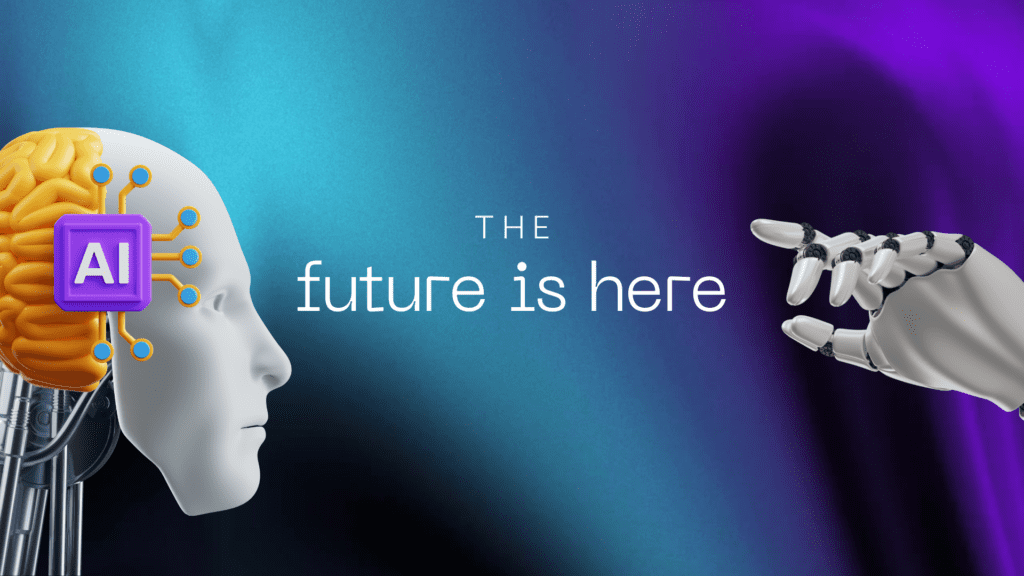
Artificial Intelligence (AI), a term coined by John McCarthy in 1956, refers to the simulation of human intelligence processes by machines, especially computer systems. These processes include learning, reasoning, problem-solving, perception, and language understanding.
In the context of modern computing systems, AI has become an integral part. It’s transforming the landscape of laptops and desktops, making them smarter and more intuitive. From voice assistants like Siri and Alexa to recommendation systems used by Netflix and Amazon, AI is everywhere. It’s making our devices understand our needs better and provide personalized experiences.
AI is not just about software. It’s also revolutionizing hardware components. Modern processors, GPUs, and memory components are being designed with AI in mind. They are becoming more efficient and powerful, thanks to AI algorithms that optimize their performance.
In the following sections, we will delve deeper into how AI is integrated into hardware and software, how it enhances user experience, its role in cybersecurity, and how it’s shaping the future of computing systems.
Artificial Intelligence has become a key player in the realm of hardware and software integration. It’s no longer just about having powerful components; it’s about how these components work together intelligently to deliver superior performance. Artificial Intelligence (AI) has catalyzed a profound transformation in the integration of hardware and software systems, ushering in an era where the synergy between components drives unprecedented performance and efficiency.
Modern processors are engineered with AI-centric features to meet the demands of complex computational tasks. For instance, Qualcomm’s Snapdragon series integrates AI accelerators that enhance processing efficiency for tasks like image recognition and natural language processing in mobile devices.
Example: The Qualcomm Snapdragon 888 chipset incorporates a Hexagon AI processor that delivers up to 26 TOPS (Trillion Operations Per Second) for AI applications, enabling advanced camera features, voice recognition, and gaming enhancements.
GPUs equipped with AI-enhanced cores empower diverse applications ranging from gaming to scientific simulations. NVIDIA’s Tensor Cores, found in its GeForce RTX series, leverage AI algorithms for real-time ray tracing and deep learning tasks, revolutionizing visual computing.
Example: The NVIDIA GeForce RTX 30 Series GPUs leverage AI-powered DLSS (Deep Learning Super Sampling) technology to upscale gaming graphics in real-time, delivering sharper images and higher frame rates with minimal performance overhead.
Memory modules are now augmented with AI capabilities to optimize data access and storage. Samsung’s SmartSSD series employs AI-based algorithms to predict and prefetch data, reducing latency and enhancing throughput in enterprise storage solutions.
Example: Samsung’s SmartSSD Computational Storage Drives leverage AI-driven processing capabilities to analyze data at the storage level, enabling real-time data insights and accelerating data-driven decision-making in data-intensive applications.
AI algorithms embedded within software applications enable predictive analytics, forecasting future trends and behaviors based on historical data. Salesforce’s Einstein Analytics employs AI models to analyze customer interactions and predict sales opportunities, empowering businesses with actionable insights.
Example: Salesforce’s Einstein Lead Scoring uses machine learning to analyze past sales data and customer attributes, assigning a score to leads based on their likelihood to convert, guiding sales teams to prioritize high-value opportunities.
Virtual assistants leverage AI algorithms to understand user queries and execute tasks autonomously. Amazon’s Alexa and Google Assistant employ natural language processing (NLP) and machine learning to provide personalized responses and streamline daily tasks.
Example: Amazon’s Alexa employs AI-based voice recognition and contextual understanding to execute commands such as setting reminders, playing music, and controlling smart home devices, enhancing user convenience and productivity.
AI is integrated into cybersecurity software to detect and mitigate evolving threats in real-time. IBM’s Watson for Cyber Security employs AI-powered threat intelligence to analyze vast amounts of security data and identify anomalies indicative of cyber attacks, bolstering enterprise defenses.
Example: IBM’s QRadar Advisor with Watson employs AI algorithms to correlate security incidents with threat intelligence, providing security analysts with actionable insights and recommendations to respond effectively to cyber threats, reducing detection and response times.
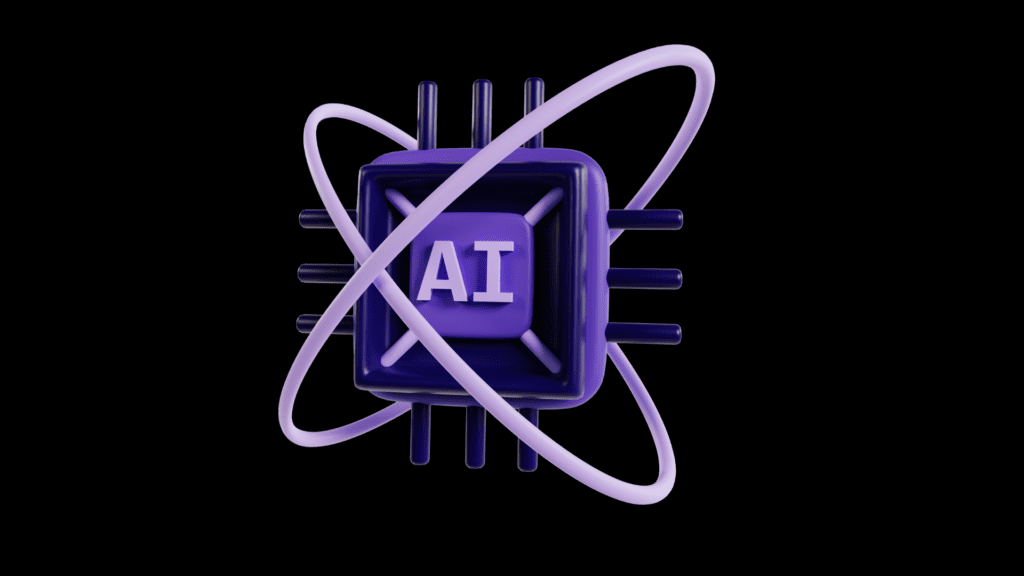


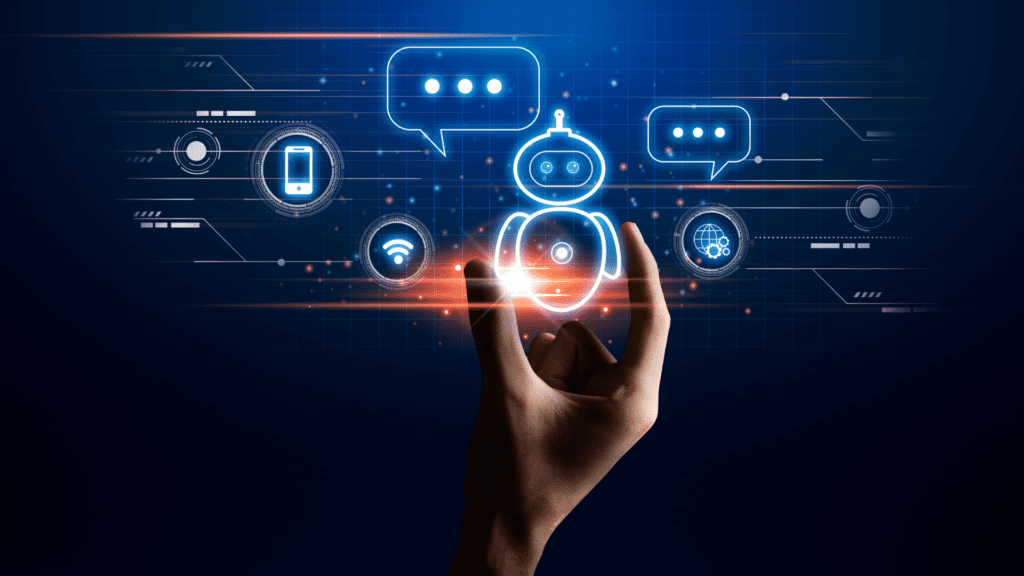
By harnessing the power of AI in both hardware and software domains, organizations can unlock new levels of performance, efficiency, and innovation, driving transformative outcomes across industries.


Scenario:
Sarah, a freelance graphic designer, relies heavily on her laptop for her work. She often finds herself juggling multiple tasks simultaneously and struggles to manage her time effectively.
Solution:
Sarah’s laptop is equipped with AI-powered productivity features, including predictive typing and smart scheduling. The predictive typing feature suggests relevant words and phrases as she types, allowing her to complete her documents faster with fewer errors. The smart scheduling feature analyzes her calendar and to-do list to automatically schedule tasks and meetings based on her priorities and availability.
Outcome:
With the help of AI, Sarah’s productivity has increased significantly. She spends less time typing and scheduling, allowing her to focus more on her creative work. The personalized recommendations provided by the AI algorithms have also helped her stay organized and on track with her deadlines.
Artificial Intelligence (AI) is far more than just a tool for boosting computational power; it’s also a key player in making computers more user-friendly. In today’s computing landscape, AI technologies are driving significant improvements in user experience.
One of AI’s standout contributions is its ability to personalize the user experience. Through sophisticated algorithms, AI can learn from user behavior and preferences, tailoring computing experiences to individual users. This personalization is evident in AI-powered voice recognition systems like Siri, Alexa, and Google Assistant, which enable users to interact with their devices using natural language. Such systems understand and execute a wide range of commands, simplifying tasks on laptops and desktops.
Additionally, AI-driven facial recognition technology has revolutionized device security and convenience. Users can now unlock their devices using facial recognition, eliminating the need for complex passwords.
Moreover, AI enhances user experience through predictive analytics. By analyzing usage patterns and behaviors, AI can predict what users might do next and prepare the system accordingly. This results in a smoother, more efficient user experience.
Furthermore, AI is continuously evolving, promising even more intuitive and seamless interactions between users and technology in the future. As AI technologies advance, users can expect further enhancements in personalization, security, and efficiency, ultimately reshaping the way we interact with computers and digital devices.
Scenario:
Emily, a college student, encounters a technical issue with her desktop computer while working on a critical assignment. She needs immediate assistance but is unable to reach a customer support representative due to long wait times.
Solution:
Emily’s desktop computer is equipped with an AI-powered virtual assistant that provides personalized user support. Using natural language processing capabilities, the virtual assistant understands Emily’s issue and guides her through troubleshooting steps in real-time. The AI algorithms also analyze past user interactions to anticipate and address common technical issues proactively.
Outcome:
Emily successfully resolves her technical issue with the help of the AI-powered virtual assistant, saving her time and frustration. The personalized user support experience leaves a positive impression on Emily, increasing her satisfaction with the product and the brand. Additionally, the AI-driven proactive support capabilities reduce the need for manual intervention from customer support representatives, leading to improved efficiency and cost savings for the company.
AI is not just making computing more enjoyable; it’s also making it more productive. organizations are constantly seeking ways to increase productivity and efficiency to stay ahead of the competition. Artificial Intelligence (AI) has emerged as a powerful ally in this pursuit, offering innovative solutions that can streamline processes, automate tasks, and unlock valuable insights. From data analysis to workflow optimization, AI is revolutionizing the way we work, enabling businesses to operate more effectively and drive growth. Lets see some areas where AI is used.

AI-powered tools can analyze large volumes of data quickly and accurately, helping businesses extract valuable insights and make informed decisions. From financial forecasting to market trend analysis, AI algorithms can identify patterns and trends that may not be immediately apparent to human analysts, thereby streamlining decision-making processes and improving productivity.
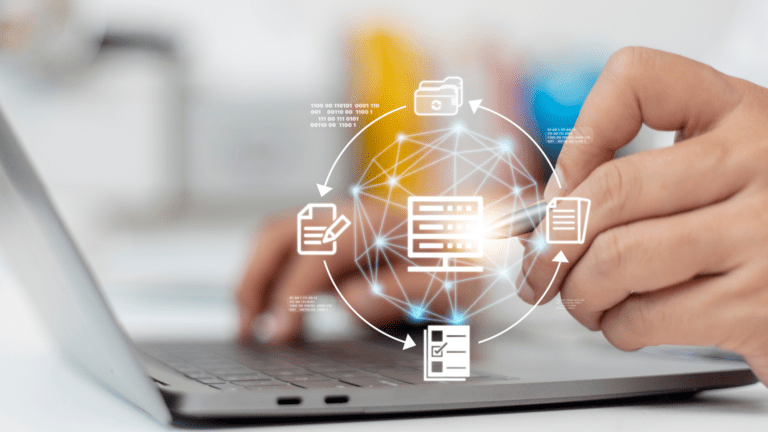
AI-based document processing tools can automate tedious tasks such as data entry, document categorization, and information extraction. These tools use techniques like natural language processing (NLP) and optical character recognition (OCR) to extract relevant information from documents, reducing manual effort and improving efficiency in tasks such as invoice processing, contract management, and data entry.

AI-powered virtual assistants and chatbots can handle routine inquiries, perform tasks, and provide information or assistance to users. By leveraging natural language understanding and machine learning algorithms, these virtual assistants can streamline customer support, employee onboarding, and internal communication processes, freeing up human resources to focus on more complex tasks and improving overall productivity.

AI-driven workflow automation platforms can streamline business processes by automating repetitive tasks, routing work items to the appropriate individuals, and optimizing task allocation based on workload and resource availability. By reducing manual intervention and streamlining workflow processes, these platforms enable organizations to operate more efficiently and effectively, ultimately driving productivity gains across the organization.

AI-powered analytics platforms can track user behavior, identify patterns, and provide insights into individual and team performance. By analyzing factors such as work habits, communication patterns, and task completion rates, these platforms can identify areas for improvement, optimize resource allocation, and enhance overall productivity within an organization.
Scenario:
A large financial institution was struggling with processing a high volume of invoices manually, which was time-consuming and prone to errors. The manual process involved manually entering data from invoices into the company’s financial system, which led to delays in payment processing and inaccuracies in financial reporting.
Solution:
The company implemented an AI-powered document processing solution that used Optical Character Recognition (OCR) and Natural Language Processing (NLP) techniques to extract relevant information from invoices automatically. The system was trained to recognize various formats of invoices and extract key data points such as invoice numbers, vendor names, and amounts.
Outcome:
The implementation of the AI-powered document processing solution significantly reduced the time and effort required for invoice processing. The system was able to process invoices at a much faster pace than human analysts, with higher accuracy and fewer errors. This led to improved financial reporting and faster payment processing, ultimately enhancing the company’s overall productivity.
Scenario:
A retail company was facing challenges in managing high volumes of customer inquiries through its customer support team. The team was overwhelmed with routine inquiries, leading to long wait times and customer dissatisfaction.
Solution:
The company introduced an AI-powered chatbot that could handle routine inquiries and provide instant responses to customers. The chatbot was trained to understand and respond to a wide range of customer queries, freeing up the customer support team to focus on more complex issues.
Outcome:
The implementation of the AI-powered chatbot led to a significant reduction in the workload of the customer support team. Customers were able to get their queries resolved quickly, leading to improved customer satisfaction. The chatbot also helped the company to operate more efficiently, as it could handle a large volume of inquiries simultaneously, without the need for additional human resources.
As organizations strive to stay ahead of the competition, AI emerges as a powerful ally in this pursuit, enabling businesses to operate more effectively and drive growth. From enhanced data analysis to automated document processing and virtual assistants, AI-driven technologies are reshaping the way we work, paving the way for a more streamlined and productive future.
In an era where data breaches and cyber threats are prevalent, security has become a paramount concern for all computing systems. Artificial Intelligence plays a crucial role in enhancing the security and privacy of modern laptops and desktops.
AI has emerged as a powerful tool in the fight against cyber threats. It can analyze vast amounts of data to detect patterns and anomalies that might indicate a security breach. For instance, AI can identify unusual network traffic or suspicious user behavior that a human might overlook.
Moreover, AI can learn from past incidents to predict and prevent future threats. Machine learning algorithms can be trained on historical cybersecurity data to predict the likelihood of a breach. This allows for proactive threat detection and response, significantly reducing the potential damage from cyber attacks.
AI is also used in malware detection and prevention. Traditional antivirus software relies on signature-based detection, which can only detect known threats. In contrast, AI can analyze the behavior of files and applications to detect previously unknown malware.

Scenario:
Meet John, a seasoned business executive entrusted with handling sensitive company information stored on his desktop computer. Concerns about the security and privacy of his data, particularly when accessing it remotely, loom large in his mind.
Solution:
To address John’s apprehensions, his desktop computer is fortified with cutting-edge AI-powered cybersecurity features. These encompass a comprehensive suite of tools, including advanced threat detection mechanisms and robust data encryption protocols. The AI algorithms work tirelessly, continuously scrutinizing John’s computer for any semblance of suspicious activity. Whether it’s unusual network traffic patterns or unauthorized access attempts, the AI promptly identifies and flags potential threats. Furthermore, all of John’s data undergoes encryption employing sophisticated AI-driven algorithms, thereby fortifying its security posture against any potential breaches.
Outcome:
The integration of AI-powered cybersecurity features yields remarkable outcomes for John. With peace of mind, he can confidently navigate his daily tasks, knowing that his data is shielded from prying eyes and malicious intent. The vigilant threat detection capabilities have proven invaluable, alerting John to several potential security threats in real-time. Armed with this knowledge, he promptly takes proactive measures to mitigate these risks, thereby safeguarding the integrity of the company’s sensitive information. Moreover, the robust data encryption measures serve as an additional layer of defense. Even in the unfortunate event of John’s computer being lost or stolen, the encrypted data remains impregnable, ensuring the confidentiality and integrity of critical business data.
In addition to bolstering cybersecurity measures, artificial intelligence (AI) emerges as a cornerstone in safeguarding user privacy and upholding data integrity.
The potential of AI extends beyond mere protection; it can actively anonymize user data, rendering it considerably challenging for unauthorized entities to trace back to individual users.
Moreover, AI offers a proactive approach in empowering users to manage their privacy settings more efficiently. By leveraging sophisticated algorithms, AI can discern a user’s privacy preferences and seamlessly adapt the settings of new applications or services to align with those preferences. This proactive stance not only enhances user control but also fosters a heightened sense of trust and confidence in digital interactions.

Artificial Intelligence is not just enhancing the user experience and security of computing systems; it’s also revolutionizing the way these systems are developed and customized.
AI is playing a significant role in streamlining the manufacturing process of laptops and desktops. It’s being used to automate various stages of the production cycle, leading to faster production times and reduced costs.
For instance, AI algorithms can predict the optimal sequence of assembly operations to minimize the time taken to assemble a laptop or a desktop. They can also identify potential bottlenecks in the production line and suggest ways to eliminate them.
Moreover, AI can monitor the quality of products in real-time during the manufacturing process. It can detect defects or anomalies that might be missed by human inspectors, ensuring that only high-quality products reach the customers.
In addition to improving the manufacturing process, AI is also enabling companies to offer customized solutions to their customers. By analyzing customer data, AI can predict user preferences and suggest personalized product configurations.
For instance, if a customer frequently uses graphic-intensive applications, the AI might suggest a laptop configuration with a high-end GPU. Similarly, if a customer primarily uses their laptop for browsing and streaming, the AI might recommend a configuration with a focus on battery life.
This level of customization not only enhances user satisfaction but also helps companies differentiate their products in a competitive market.


Scenario:
A computer hardware manufacturer wants to develop a new line of high-performance gaming laptops. However, designing and optimizing the components and configurations for various use cases can be a complex and time-consuming process.
Solution:
The manufacturer employs AI-powered design and simulation tools to assist in the product development process. These tools can analyze vast amounts of data, including customer preferences, performance benchmarks, and component compatibility, to generate optimized designs and configurations for different gaming scenarios.
The AI system can simulate various hardware configurations, testing them against different gaming workloads and performance metrics. It can also identify potential bottlenecks, thermal issues, or compatibility problems, and suggest design improvements or alternative component selections.
Outcome:
By leveraging AI in the product development process, the manufacturer can significantly reduce the time and resources required for designing and testing new gaming laptop models. The AI-powered tools can quickly generate multiple optimized designs tailored to specific gaming genres or user preferences, ensuring that the final products meet the needs of various gaming audiences.
Additionally, the AI-driven simulations can identify potential issues early in the development cycle, allowing the manufacturer to address them proactively, leading to improved product quality, reliability, and customer satisfaction.
Scenario:
A computer retailer wants to offer personalized configurations for their desktop systems to cater to the diverse needs of their customers. However, manually creating customized configurations for each customer can be challenging and time-consuming, leading to potential errors and customer dissatisfaction.
Solution:
The retailer implements an AI-powered configurator tool that can analyze customer data, such as their intended use cases, budget constraints, and preferences for performance, storage, and other features. The AI system can then generate personalized desktop configurations that optimally match each customer’s requirements.
The AI configurator can also suggest upgrades or alternatives based on the customer’s budget and usage patterns, providing a tailored and informed recommendation for each individual.
Outcome:
By utilizing AI in product customization, the retailer can offer a seamless and personalized experience to their customers. Customers can easily select their desired configurations or rely on the AI-generated recommendations, ensuring that they receive a desktop system that meets their specific needs and budget.
This level of customization not only enhances customer satisfaction but also helps the retailer differentiate its offerings from competitors. Additionally, the AI-powered configurator can reduce the workload on sales staff, allowing them to focus on providing better customer support and service.
AI is at the forefront of driving groundbreaking advancements in autonomous systems, revolutionizing industries ranging from transportation to manufacturing. In the realm of self-driving cars, AI algorithms are powering sophisticated perception and decision-making capabilities, enabling vehicles to navigate complex road environments safely and efficiently. Similarly, drones equipped with AI technologies are revolutionizing sectors such as agriculture, infrastructure inspection, and emergency response, offering unparalleled aerial intelligence and operational efficiency. Moreover, AI-driven robotic systems are transforming manufacturing processes, logistics operations, and healthcare delivery, enhancing productivity, and safety. AI is not only optimizing resource utilization and minimizing human error but also opening up new opportunities for innovation.

The integration of AI into environmental computing systems drives asignificant progress in understanding and mitigating environmental challenges. AI-powered climate modeling uses vast datasets and complex algorithms to simulate and forecast climate patterns accurately, informing stakeholders about climate change impacts and adaptation strategies. AI algorithms revolutionize pollution monitoring by analyzing sensor data, satellite imagery, and environmental records to identify pollution sources and assess air and water quality in real time. Additionally, AI-driven natural disaster prediction systems enhance early warning capabilities for events like hurricanes and wildfires, enabling proactive measures to protect lives and property while enhancing sustainability efforts and safeguarding our planet.
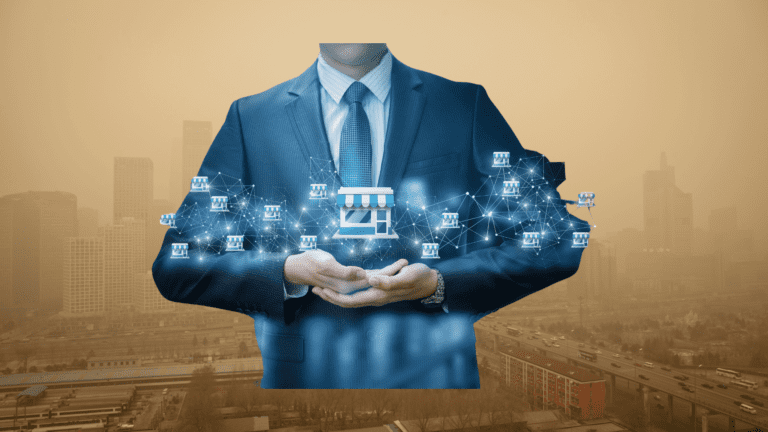
AI transforms human-machine collaboration, unlocking creativity, innovation, and productivity across domains. AI augments human capabilities with intelligent algorithms, enabling seamless collaboration in tasks from data analysis to decision-making. In healthcare, AI-powered diagnostic tools assist medical professionals in diagnosing diseases and designing treatment plans, improving patient outcomes. In creative industries, AI algorithms empower individuals to explore new creative avenues in music composition, art generation, and content creation. In industrial settings, collaborative robots (cobots) with AI capabilities enhance productivity and safety alongside human workers. Harnessing AI in human-machine collaboration unlocks synergies between human ingenuity and machine intelligence, driving transformative advancements across industries.

As we look towards the future, it’s clear that Artificial Intelligence will continue to play a pivotal role in shaping the landscape of computing systems. Here are some of the upcoming trends and innovations that we can expect in this space.
Advancing AI Workloads with Specialized Hardware, we can expect to see more processors designed specifically for AI workloads. These processors will have specialized cores and instructions for AI tasks, leading to significant performance improvements for AI applications. As technology evolves, these processors are poised to revolutionize the field of artificial intelligence. With ongoing research and development, future promises greater advancements in AI hardware capabilities.
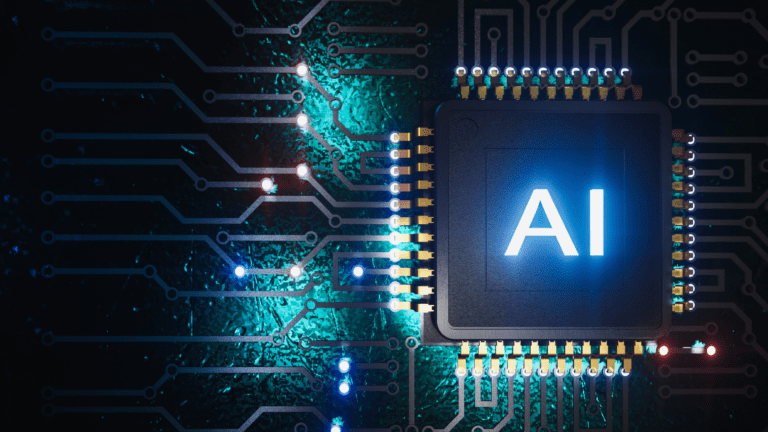
Quantum computing, which leverages the principles of quantum mechanics to perform computations, is another area where we can expect significant advancements. Quantum computers have the potential to solve complex problems much faster than traditional computers. As these technologies mature, we can expect to see them being used in conjunction with AI to solve complex problems in areas like cryptography, optimization, and machine learning.
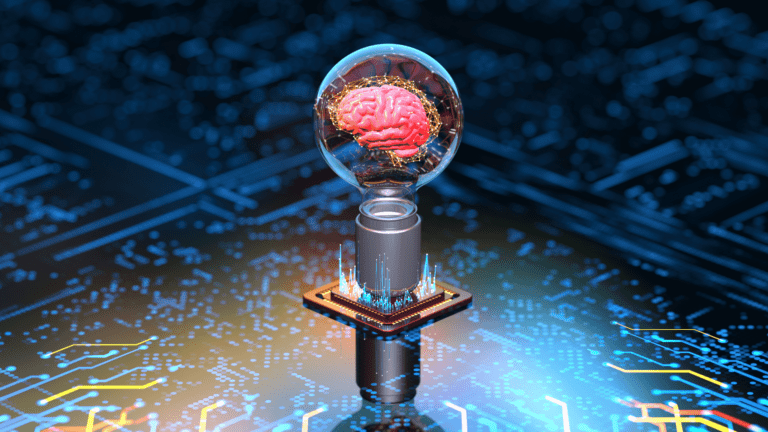
Edge computing, where computations are performed close to the source of the data, is another area where AI is expected to have a significant impact. By processing data on the edge, AI applications can provide real-time insights without the need to send data back and forth to a central server. This can lead to significant improvements in speed and efficiency, especially for applications that require real-time decision making.

As AI capabilities advance, proactive ethical frameworks and policies must be developed to guide responsible AI deployment and mitigate potential risks to society. Embracing ethical principles ensures that AI technologies benefit humanity while upholding values of fairness, transparency, and accountability. Here are several key points to explore
Privacy and Data Breaches
Risk: The storage and processing of large datasets raise the risk of data breaches.
Mitigation Strategies:
Accountability for AI Mistakes
Challenge: When AI makes a mistake, it’s unclear who should be held accountable.
Mitigation Strategies:
Fairness and Discrimination
Concern: Biased AI systems can perpetuate inequalities and unfair treatment.
Mitigation Strategies:
Explainability and Transparency
Challenge: AI decisions are often not intelligible to humans.
Mitigation Strategies:
Environmental Sustainability
Issue: AI models require significant computational resources, impacting the environment.
Mitigation Strategies:
Inclusion and Accessibility
Goal: Ensure AI benefits all, regardless of background or abilities.
Mitigation Strategies:
Value Alignment and Moral Agency
Challenge: Ensuring AI aligns with human values and ethical norms.
Mitigation Strategies:
Trust and Accountability
Importance: Building trust in AI systems is crucial for user adoption.
Mitigation Strategies:
Technology Misuse and Security
Risk: AI can be misused for harmful purposes (e.g., deep fakes, cyberattacks).
Mitigation Strategies:
The integration of Artificial Intelligence into modern computing systems marks a significant milestone in the evolution of technology. From enhancing user experiences to improving productivity and efficiency, AI is reshaping the way we interact with computers and devices. Through personalized user experiences, AI-driven hardware and software integration, and advancements in user support and security, computing systems are becoming more intuitive, efficient, and secure.
Moreover, AI’s impact extends beyond traditional computing realms. With its application in autonomous systems, environmental computing, and human-machine collaboration, AI is driving innovations across various industries. From self-driving cars and drones to climate modeling and disaster prediction, AI is playing a crucial role in solving complex problems and addressing global challenges.
As we look towards the future, the potential of AI in computing systems appears boundless. With ongoing advancements in AI-enhanced processors, quantum computing, and edge computing, we can expect even greater integration and sophistication in computing technologies. Furthermore, ethical considerations surrounding AI will continue to be a focal point, ensuring that AI systems are developed and deployed responsibly.
In essence, the role of Artificial Intelligence in modern computing systems is not merely transformative; it’s foundational. By leveraging the power of AI, we can unlock new possibilities, drive innovation, and create a future where computing systems empower individuals and organizations to thrive in an increasingly interconnected world.
©2024 Holoware® Computers Pvt. Ltd. | Privacy Policy | Terms & Condition

In 1994, Mr.Thangavel started Origin Information Technology (in partnership with Mr. Loganathan) to provide quality computer hardware sales and service. In the year 2022, the company name was changed to “Tinkas Industries Private Limited” to encompass its diversified activities. Mr. Thangavel feels that he can give back to his nation the growth it needs in many ways like providing employment opportunities to many, and doing CSR activities, etc. His goal is to make Tinkas a leader at the National and Internaltional levels.
Holoware CEO abut Tinkas CEO
“The CEO of Tinkas (Mr.Thangavel) is undeniably one of the most practical and resourceful individuals I’ve encountered in Tamil Nadu. His profound understanding of the industry coupled with his diverse business ventures truly exemplifies his wealth of knowledge. Partnering with Tinkas has been a delight, and we eagerly anticipate further growth and collaboration.”
Mr. Ketan Patel is an indomitable entrepreneur revolutionizing the landscape of electronic consumer products worldwide through an unparalleled ‘experiential journey.’ Leading Creative Newtech since 1992, he steered its growth from a Mumbai market trader to a distributor and Brand Licensee. As an alumnus of IIM-Bangalore, Mr Patel leads Creative Newtech with a focus on innovation and strategic leadership. Under his three-decade leadership, Creative Newtech has become India’s market leader, expanding globally across Hong Kong, the Middle East, and the SAARC region.”
Holoware CEO abut Creative Newtech CEO
“The CEO of Creative (Mr.Ketan Patel) is a highly knowledgeable leader, renowned for his expertise in distributorship. His intuitive knack for product selection and sales strategies, both in India and abroad, is impressive. Creative thrives as a powerhouse, fueled by its diverse team and collective expertise. We eagerly look forward to a promising future and further success in our collaboration with Creative.”

Inmac Computers Private Limited is a trailblazing name in the realm of IT services and solutions. With a remarkable inception in 1992 by visionary entrepreneurs Girish Babu and Asha Girish Babu, our company has consistently remained at the forefront of technological innovation, setting new standards for excellence in the industry.
Holoware CEO abut Inmac CEO
“Inmac’s CEO (Mr.Girish Babu) is one of the most humble and generous individuals I’ve ever had the pleasure of meeting. His leadership has been instrumental in steering his team to success, not just in Maharashtra but across various regions in India. Their financial stability over the years speaks volumes about his capabilities. It’s truly a delight to collaborate with someone of his caliber. I look forward to continued partnership with Inmac.”